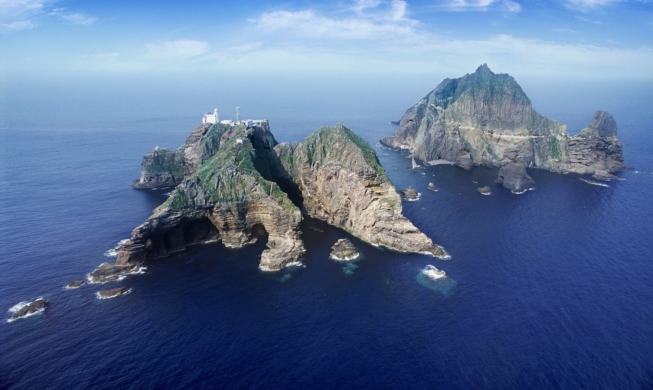- 한국어
- English
- 日本語
- 中文
- العربية
- Español
- Français
- Deutsch
- Pусский
- Tiếng Việt
- Indonesian
By Honorary Reporter Carlos Delfín from Mexico
Photos = Kim Chan-hee
"Cultural Reciprocity: Neo Culture Hanbok" is a photography project that features the fusion of traditional Korean clothing with its counterparts from other countries.
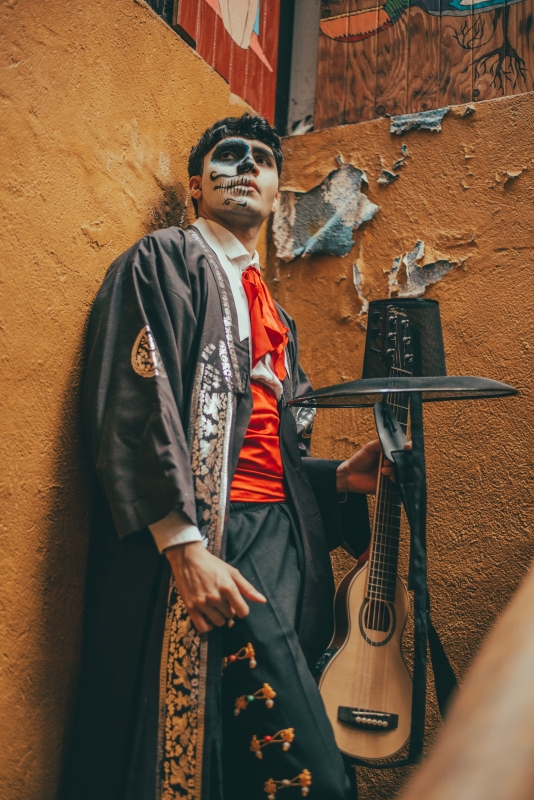
This Hanbok has a Mexican mariachi influence.
The project was founded by and is led by Kim Chan-hee, a commercial photographer who majored in traditional Korean painting and filmmaking at Hongik University. Despite her day job, she said she is more interested in documentary photography and filmmaking that spotlight social issues and culture.
Kim studied the culture and history of each country featured in the project, striving not to offend the people she featured. She said she was inspired by the festival Diwali while living in India and Day of the Dead in Mexico, adding that she will put her thoughts and ideas on this project in a book.
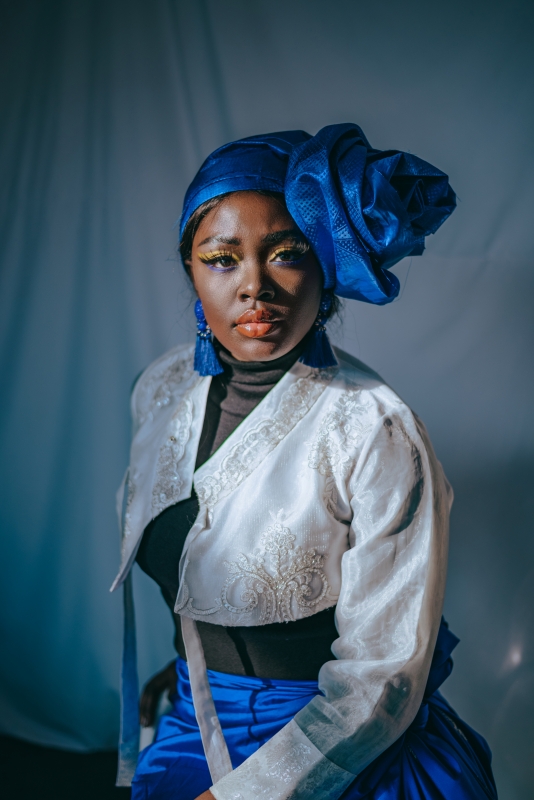
This Hanbok dress features a Nigerian headpiece.
Another contributor to this project is makeup artist Choi Hae-rim, who majored in beauty management at Kyung Hee University in Seoul. When arranging a model's hairstyle and makeup, she said she consulted with the natives of a featured country to create her own style.
For the Philippines, Choi said she referred to Korean hairstyles and makeup. For Nigeria, she said she wanted to give a strong color to the eyes due to the bright blue material and used a traditional Nigerian hair decoration.
Hwang Se-in, a junior fashion design major at Keimyung University in Seoul, is in charge of the project's overall costume design and coordination. She said she found common traits in Hanbok and other traditional clothes while researching them. For example, she discovered that Hanbok and Mexico's mariachi had similar symmetrical decorations and geometric detail.
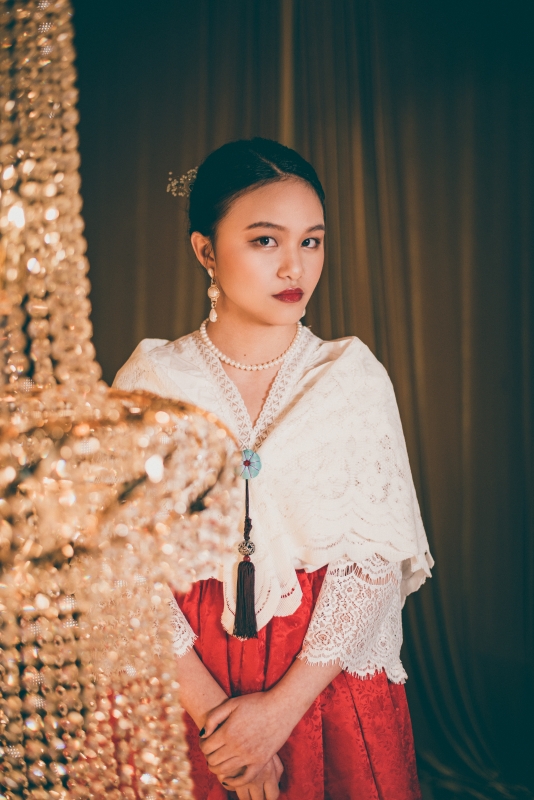
The Philippine influence is obvious in this Hanbok design.
The following are excerpts from an interview with Kim Chan-hee.
How did you get the idea for the project?
My team and I oppose any kind of discrimination. I'm especially aware of the discrimination that occurs in Korea. As an Asian woman, I often suffer racism, gender discrimination or both when traveling abroad. Yet I believe that Korea is not free from discrimination and hatred, either.
What is your purpose for doing this project?
I want to criticize racism, especially exclusion and discrimination against non-white multicultural families in Korea. So perhaps Hanbok in the near future can show elements from the traditional clothes of other countries to show the cultural background of a multicultural family.
Through my project, I hope for more commitment to and respect for a multicultural society. I also hope for a little change in the modeling scene. In Korea, white models are highly preferred even by domestic brands, so I hope that our project helps remove prejudice against non-white models.
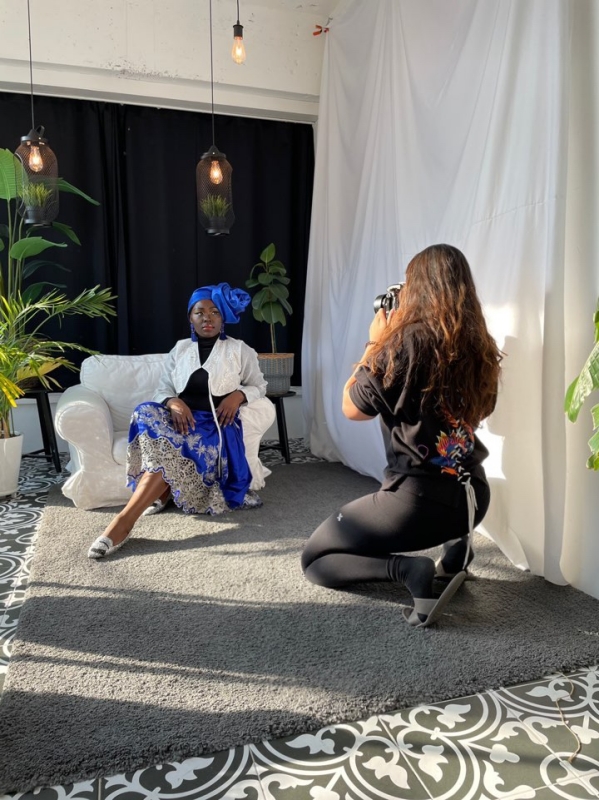
Project leader Kim Chan-hee photographs a Nigerian model.
Do you plan to include more countries in this project?
Yes. We've worked with the Philippines, India, Nigeria, Gambia and Mexico and next is South Africa. Photoshoots in Morocco, Uzbekistan, Panama and Pakistan are scheduled, and if we can find a model, we will add Indonesia.
kalhong617@korea.kr
*This article is written by a Korea.net Honorary Reporter. Our group of Honorary Reporters are from all around the world, and they share with Korea.net their love and passion for all things Korean.
Most popular
- Grammy-winning producer calls Suga of BTS 'amazing artist'
- 'Universal love, family' themes fuel success of 'King of Kings': director
- Council sets minimum hourly wage in 2026 at KRW 10,320
- Expansion of foreign app system raises tourist convenience
- Nat'l population diversity rose nearly 8% from 2018-22: study
